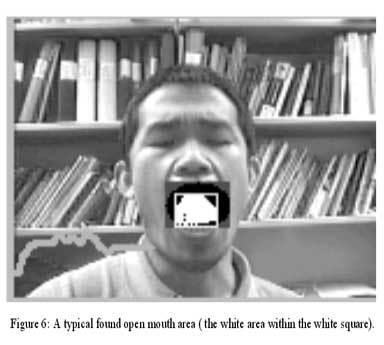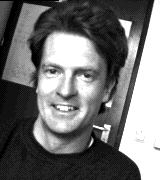Marc Abrahams's Blog, page 265
June 16, 2016
A Yawn Detector, Networked
The Facial Action Coding System (FACS) as depicted above, was chosen as a reference for the ‘Networked Yawn Detector’ (a car-driver safety-monitor) developed by Zhengrong Yao and Haibo Li of the Department of Applied Physics and Electronics, Umeå University, Sweden.
“We test our system publicly, 26 students from the Applied Physics and Electronic Engineering Department of Ume [sic] University tried the system. They all have driving experience. Each attendant was requested to perform at least 10 yawns, the correctly recognized number was counted. The system was trained using the training data collect from out lab group member’s yawn sequences. The system beeps as the calculated probability of the mouth motion is within a predefined range, the range was settled by our experience.”
“In this paper the Facial Action Coding System is suggested to be used to represent facial expression variations. We have demonstrated that probabilistic coupling of mouth actions with Hidden Markov Models is a promising way to handle dynamic facial expressions. The hierarchical framework developed in this paper can also be extended to handle the general human mental state estimation problem. User tests and subject evaluation show the technology is appealing for car users, and also give hints for further development of such kind of system.”
See: A Networked Yawn Detector DML Technical Report: DML-TR-2003:3
Note: The team also published a follow-up paper on yawn detection a year later: A video based real time fatigue detection system DML Technical Report: DML-TR-2004:3 [see photo below]

June 15, 2016
From smaller than small to bigger than big
There are many ways to look at the span of sizes of things in the universe. Here are three.
The cryptically named xurb1a made this video called “The Universe in 4 minutes“:
Some years ago, Charles and Ray Eames made this video called “Powers of Ten“:
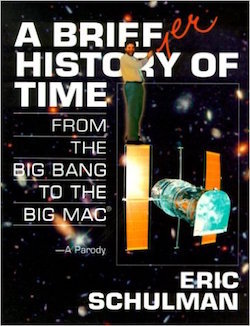 Between way back then and now, Eric Schulman wrote a book called A Briefer History of the Time (the title was later borrowed by Stephen Hawking for a book of his own, which was fitting because Eric Schulman’s book title was a tilt-nodding tribute to Hawking’s earlier book called A Brief History of Time. Eric Schulman’s book began as Eric Schulman’s “History of the Universe in 200 Words or Less“, a talk that he first performed at the 1997 Ig Nobel Prize ceremony (a book publisher, in the audience at that ceremony, offered him a book contract on the spot; thus came the book version), and later performed at many other places, including the National Science Foundation.
Between way back then and now, Eric Schulman wrote a book called A Briefer History of the Time (the title was later borrowed by Stephen Hawking for a book of his own, which was fitting because Eric Schulman’s book title was a tilt-nodding tribute to Hawking’s earlier book called A Brief History of Time. Eric Schulman’s book began as Eric Schulman’s “History of the Universe in 200 Words or Less“, a talk that he first performed at the 1997 Ig Nobel Prize ceremony (a book publisher, in the audience at that ceremony, offered him a book contract on the spot; thus came the book version), and later performed at many other places, including the National Science Foundation.
The original 200-words-or-less piece was published in the Annals of Improbable Research, early in 1997, and subsequently was translated into many languages, by many volunteers. Eric maintained the translations on his personal web site, which subsequently vanished when Verizon did away with personal web sites. Those dozens of translations exist now (perhaps only) on the Internet Archive Wayback Machine.

Drunk German Speech [podcast 68]
Until not so long ago, if you wanted a public corpus of alcoholized German speech, you would have been up a creek, so to speak, without a corpus. That situation has changed — as we see (or hear) in this week’s Improbable Research podcast.
SUBSCRIBE on Play.it, iTunes, or Spotify to get a new episode every week, free.
This week, Marc Abrahams — with dramatic readings by Jean Berko Gleason — tells about:
Drunk German speech — “Alcohol Language Corpus. The first public corpus of alcoholized German speech,” Florian Schiel [pictured here], Christian Heinrich, and Sabine Barfüßer, Language Resources and Evaluation, 2011. The authors are based at Ludwig-Maximilians-Universität, in München.
The mysterious John Schedler or the shadowy Bruce Petschek perhaps did the sound engineering this week.
The Improbable Research podcast is all about research that makes people LAUGH, then THINK — real research, about anything and everything, from everywhere —research that may be good or bad, important or trivial, valuable or worthless. CBS distributes it, on the CBS Play.it web site, and on iTunes and Spotify).

June 14, 2016
The Hercules Number: How a Dimensionless Physical Parameter Got Its Name
I did not conceive or give birth to the Hercules Number. But I did name it. Here’s the story.
In science and mathematics, we often get to name things. To help with exposition, sometimes we essentially have to name them, because it can help us do a better job of explaining things. In fact, we also enjoy naming things. To borrow some words from the computer game Beyond Zork, we often want a scientific idea to “bask in the glow of a new-forged synonym.”
And we get to name all sorts of things—concepts, theorems, examples, equations, groups, graphs, manifolds, numbers, physical parameters, and more. Sometimes we name them after people—ideally after somebody other than ourselves, and occasionally even after the person who actually had the idea first—and other times we get to be more creative. Naturally, the same object can go by more than one name, especially when multiple scientific fields are involved. On occasion, we fail miserably in our naming adventures. In abstract algebra, for example, there are so-called extra special groups. (My abstract algebra professor at Caltech couldn’t tell us about them without giggling over the name, so that is how you should read the previous sentence.)
One of the peculiar traditions in continuum mechanics (and especially in fluid mechanics) is the incessant naming of dimensionless physical parameters: the Reynolds number, the Rayleigh number, the Prandtl number, the Péclet number, and myriad others. If one states all of these numbers quickly one after another, one would almost have a George Carlin routine, except with a lot less cussing.
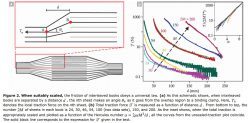
Illustration of (a) why it is really hard to separate two interleaved books and (b) the dimensionless parameter now known as the Hercules number. [This illustration is Figure 2, and its associated caption, from a quick study in Phys. Today 69, 6, 74 (2016).]
A recently-introduced dimensionless parameter that caught my eye was the Repunzel number from ponytail physics (the subject of the 2012 Ig Nobel Prize in physics). And the naming of this number was very much on my mind a few months ago when I wrote an entry in the Improbable Research blog about a very cool new paper in Physical Review Letters (PRL) on how hard it is to pull apart two interleaved phone books. The authors of the paper had introduced a dimensionless parameter, but it didn’t have a name. And it clearly required a Herculean effort to pull apart those phone books, so I knew what name I wanted to attach to that dimensionless parameter. So with inspiration that was part Herculean, part Oxonian (I have spent the last 9 years in Oxford surrounded by applied mathematicians who study continuum mechanics), and part Repunzelian, I wrote the following sentence:
Restagno and colleagues also fit the data to a curve of force versus a dimensionless amplification parameter—following the continuum-mechanics tradition of using cute names for dimensionless parameters, let’s call it the “Hercules number”—that depends on the number of pages, the page thickness, and the size of the overlap region between the books.
The authors of the PRL paper enjoyed the new monicker—one might even say that the Hercules number was basking in the glow of its new-forged synonym—and they mentioned it to me via Twitter. And now Kari Dalnoki-Veress, Thomas Salez, and Frédéric Restagno (three of the authors of the original PRL paper) have written a “quick study” in the June 2016 issue of Physics Today. As you’ll notice, they use the name Hercules number, and of course I am very pleased about that. I am always happy to contribute to mathematics and physics with my wit and snark.
Bonus: When it comes to naming a scientific idea after a person (and whether or not one has chosen the correct one), I would like to invoke the “Three Laws of Discovery” that are listed among the quotations on Ig Nobel laureate Michael Berry’s website:
Discoveries are rarely attributed to the correct person. (Arnold’s Law, which is of course self-referential)
Nothing is ever discovered for the first time. (Berry’s Law)
Everything of importance has been said before by someone who did not discover it. (Whitehead’s Law, though I am not sure which Whitehead it is. I assume it is one of the mathematical ones.)
Another Bonus: The story of the in nuclear physics is absolutely lovely. (That name came about substantially through the efforts of Melissa Franklin, whom you may have heard on Improbable Research podcasts.)
A Third Bonus: In mathematics, there is a problem called the Ten Martini Problem.

June 13, 2016
New uses for old CDs (part 3)
Got old CDs? Looking for uses for them? Have you thought about their application in crime scene photography?
“Tripod legs of cameras often sink into sand, mud, or snow. To avoid this, old CDs can be used by placing approximately three of them under the feet of the tripod. CD’s can also be used as reflectors when photographing smaller articles of evidence.”
The extract is from Law Enforcement Technology, Volume: 31 Issue: 2, February 2004, Pages: 38, 40-42,44, provided by the US National Criminal Justice Reference Service (NCJRS).
Notes: In the absence of a photo or diagram from the article, the picture shows instead a commercial version of a broadly similar concept – the Lino Manfrotto SKU 230 Tripod Snow Shoe.
This concludes our brief series ‘New uses for old CDs’. If you know of any other (documented) uses for them, do let us (and others) know by commenting below.

June 12, 2016
An Improved Swagger Stick, Designed for Good Measure
This invention made it convenient both to swagger and to measure with exactitude:
“Military interval swagger stick,” US 2923063, granted February 2, 1960 to Lorenzo D. Hansen. The patent document explains:
“The use of swagger sticks is a military custom. They are carried by officers during drills and parades. Other than its limited value as a pointer or the like the conventional swagger stick is primarily a symbol or vestment of command having no particular utilitarian value.
“The present invention is directed to provision of an improved swagger stick which does have utilitarian value, particularly so with respect to the constant problem of training military personnel to drill and parade with the proper interval maintained between ranks. While a skilled drill leader develops considerable judgment as to the determination of a 40 inch interval, many new officers and even many of the more experIenced ones lack that judgment and even when possessing it would prefer to demonstrate authoritatively and visually to the men the required spacing for a 40 inch interval. The present invention provides a convenient means incorporated in or comprising the improved swagger stick for quickly gauging a 40 inch interval. It also permits quickly reconverting the swagger stick to its conventional compact length (i.e., slightly under two feet) and form for ordinary usage.”
Here’s detail from the patent:

June 11, 2016
4.5 million looks at a couple’s sex organs
The historic video of the video of MRI sex has gone past the 4.5 million (4,500,000) views mark on YouTube. Dr. Pek van Andel produced the MRI sex video as a spinoff from his historic, ultimately prize-winning experiment. The experiment asked and answered the question: Is it possible to take MRI images of a couple’s sexual organs while those organs are in use?
The Ig Nobel prize in medicine, in the year 2000, was awarded to Willibrord Weijmar Schultz, Pek van Andel, and Eduard Mooyaart of Groningen, The Netherlands, and Ida Sabelis of Amsterdam, for their report, “Magnetic Resonance Imaging of Male and Female Genitals During Coitus and Female Sexual Arousal.” [Published in British Medical Journal, vol. 319, 1999, pp 1596-1600.]
BONUS: Ida Sabelis, one of the people inside the MRI tube, later wrote about the experience. That account was published in the Annals of Improbable Research.
BONUS: Dutch filmmaker Bahram Sadeghi later made a short documentary about the people involved in the experiment. Here it is:
BONUS [July 3, 2012]: Investigator Tony Tweedale alerts us to the consequential connection between the above video and the one displayed, on the New Scientist web site, under the headline “Baby’s birth captured in MRI movie for the first time“:

June 10, 2016
New uses for old CDs (part 2)
Got old CDs? Looking for uses for them? Have you thought about immobilizing biomolecules in their microgrooves?
“Old compact discs (CDs) have been found to be useful for modern chemical research. Their metal reflective film is suitable for the preparation of high-quality self-assembled monolayers (SAMs) and for electrochemical analysis; pre-grooved polycarbonate base is ideal for the ‘customized’ fabrication of material micro/nanostructures; and the immobilization of biomolecules on CDs, in conjunction with a conventional CD drive, promises to be an inexpensive tool for point-of-care biomedical diagnosis and gene analysis.”
$ee: ‘New chemistry on old CDs’ in Chem. Commun., 2004, 2633-2636
Also see: ‘ The 2004 Fred Beamish Award Lecture : Analytical materials chemistry on old CDs :Beyond self-assembly’
Coming soon: New uses for old CDs (part 3)

June 9, 2016
New uses for old CDs (part 1)
Got old CDs? Looking for uses for them? Have you thought about them in the context of ostrich entertainment? See: ‘How To Enrich the Largest Living Bird ‘ in the 2015 issue of The Ratite Review : The AZA Struthioniformes Taxon Advisory Group’s Annual Newsletter [note: 10 MB download] 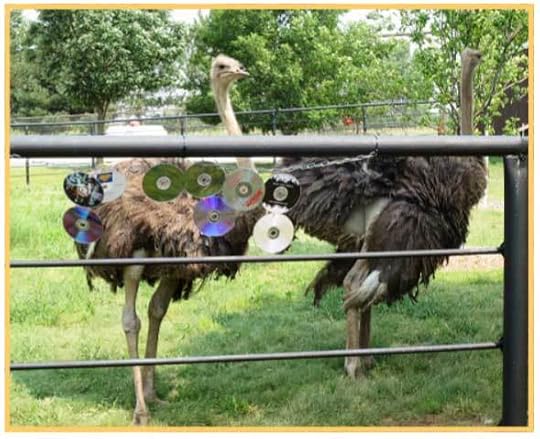
“Captive Ostrich enjoy various forms of enrichment. They are very curious and enjoy pecking at shiny items. Mobiles can be made up of old CD’s. Hanging colorful hard plastics, such as baby toys in their inside stalls or metal objects that make lots of noise like a cow bell, are easy for keepers to gather up and use. Be aware that ostrich may ingest any object that they can swallow. Enrichment items need to be large enough to prevent this and closely monitored for signs of breakage. As with most birds Ostrich enjoy a good shower. A nice fine mist starting from their feet and working up will result in a soaked happy bird in no time.”
Coming soon: New uses for old CDs (part 2)
Also see (Ostrich related): ‘Can (or should) Ostriches Eat Horseshoes?’

June 8, 2016
The attempt to automatically recognize boredom [podcast 67]
Can a machine reliably recognize when a human is bored? That is the central question in this week’s Improbable Research podcast.
SUBSCRIBE on Play.it, iTunes, or Spotify to get a new episode every week, free.
This week, Marc Abrahams — with dramatic readings by Nicole Sharp — tells about:
How to automatically recognize boredom — “A Preliminary System for Recognizing Boredom,” Allison M. Jacobs, Benjamin Fransen, J. Malcolm McCurry, Frederick W.P. Heckel, Alan R. Wagner, and J. Gregory Trafton, Proceedings of the 4th ACM/IEEE International Conference on Human Robot Interaction, 2009, pp. 299-300.

“Please stop. I’m bored.” — Boredom, especially the prevention of it, is ever on the minds of the organizers of the annual Ig Nobel Prize ceremony. This video shows one of our most successful methods at prevention. The method is called “Miss Sweetie Poo”:
The mysterious John Schedler or the shadowy Bruce Petschek perhaps did the sound engineering this week.
The Improbable Research podcast is all about research that makes people LAUGH, then THINK — real research, about anything and everything, from everywhere —research that may be good or bad, important or trivial, valuable or worthless. CBS distributes it, on the CBS Play.it web site, and on iTunes and Spotify).

Marc Abrahams's Blog
- Marc Abrahams's profile
- 14 followers


